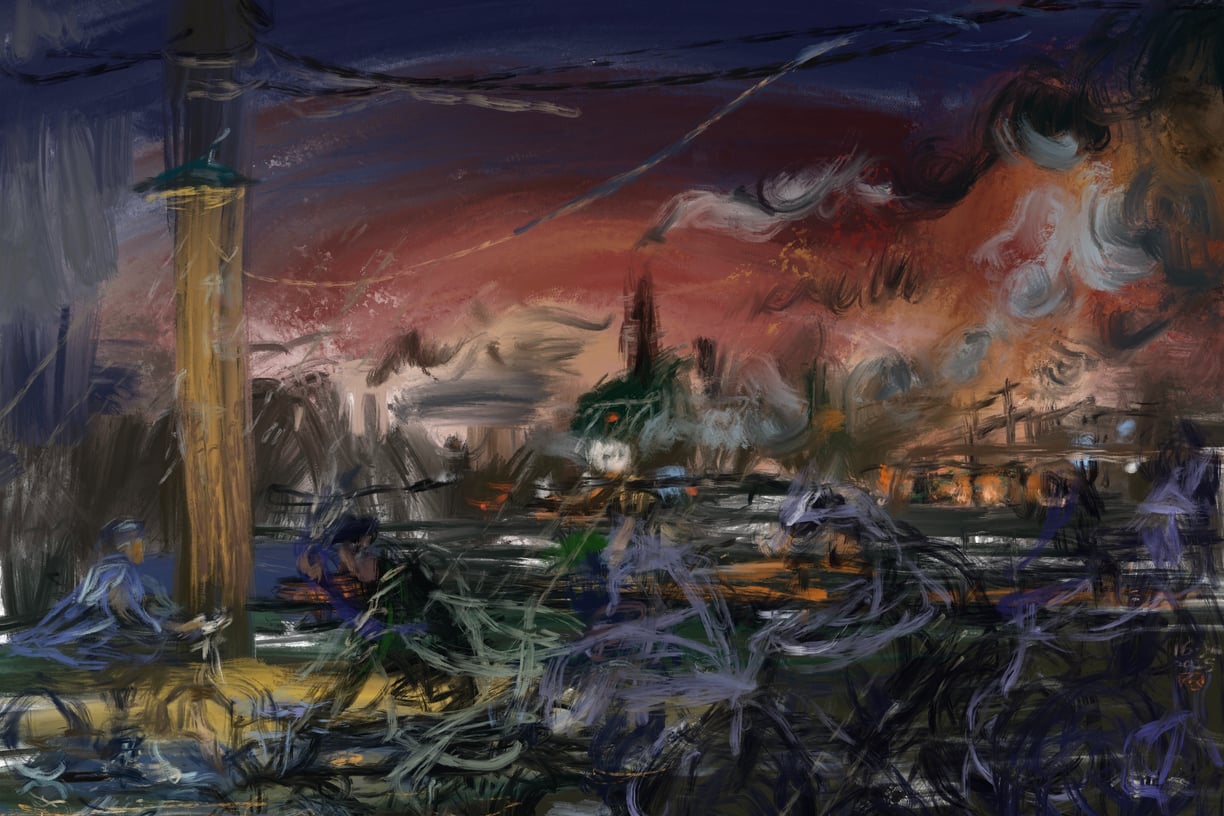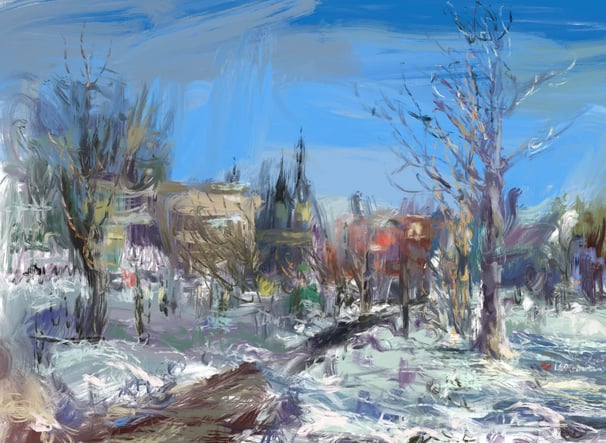

I am a Chinese-born artist living on Prince Edward Island, Canada, working across oil painting, ink, printmaking, drawing, and mixed media. My practice is less about mastering a single style or medium than about responding to the tensions that stretch across geography, time, and culture—including my own migrations, family histories, personal growth, and the deconstruction and reconstruction of social symbols and collective memory.
I was born in the late 1970s, just as China began to open up. My family was a working-class household; my father was a mechanical engineer in a factory. I remember the first time I saw Western art was in a magazine he brought home after work. Inside were images of Van Gogh, Wyeth, Zorn, Michelangelo, and black-and-white photos of the radical Star Art Exhibition in Beijing. These pictures were nothing like the propaganda posters I grew up with—no clear hero, no linear story, but full of ambiguity and raw emotion. I couldn't even read yet, but those images left a deep impression. It was confusing, even unsettling, but that confusion was a seed of curiosity buried like magma beneath ice, waiting to erupt decades later.
My father himself loved to draw as a child, but such ambitions were not allowed in that era. He chose mechanical design—a “needed” profession that at least involved drafting. I have vivid memories of accompanying him to the factory at night, watching him draw complicated machine diagrams on translucent drafting paper for cyanotype printing. I'd ask, “Why only machines? When will you draw people?” He'd smile and say, “Soon,” and I'd fall asleep in an office chair. Years later, making my own cyanotype works, those nights came flooding back—not simply as warm nostalgia, but as evidence of the quiet violence of deferred dreams. My uncle had a similar path: he loved art but studied foreign languages instead, a kind of modest portal to the wider world. When I visited him recently, I saw he'd taken to making small paintings in retirement—a late, gentle act of return.
My own path was also full of detours. I trained rigorously at Xi’an’s art academy, including three months of anatomical study at a medical school, where we hauled cadavers from formaldehyde tanks to draw their structure with unflinching honesty. But after graduation, I turned away from fine art entirely, spending over two decades in design and advertising in Guangzhou. That world taught me clarity, strategy, and persuasion, but it also seemed to strip away my most tactile, emotional, and human skills. For years, I believed the sensory, craft-based knowledge I’d fought to acquire had become irrelevant—dead weight in the world of commerce.
Yet those buried capacities never truly disappeared. Coming to PEI was an unexpected kind of homecoming. The island’s quiet, open landscapes and slower pace gave me the space to confront my own internal splits. I discovered that what I'd thought was useless was in fact essential. I picked up brushes, ink, oil sticks, carving tools, and rediscovered the physicality of making. I also began revisiting my own memories: my father’s drafting paper, the bewildering pages of that art magazine, the sleek slogans of the advertising world, my own body’s memory of materials, my long-standing fascination with semiotics and visual storytelling.
Today, my work branches across multiple series, which are not contradictory but map onto a layered artistic terrain. Water-Ink Canada fuses Chinese ink techniques with images of Canadian hockey players, island landscapes, and everyday scenes—a hybrid of personal experience, cultural heritage, and local memory. Jieqi’s Dragon is a community art project merging China’s traditional solar terms with local environmental education, reflecting how cultural identity evolves in migration. The Nude Santa series, seemingly humorous, is actually an exploration of aging flesh, shame, and the deconstruction of consumerist iconography. Other series like Multiple Moments and Shorecake arise from my time on PEI, responding to its natural environment, the erosion of coastlines, the layering of memory, and the vulnerability of bodies.
My family’s geography—from ancestral roots in Shaoxing and my father’s birthplace in Jinan (places I’ve never lived but have imagined all my life), to my own birth and training in Xi’an, my decades of work and family life in Guangzhou, and now my residence on this Canadian island—forms the coordinate system of my work. Meanwhile, the shifts in my mindset across childhood, youth, and middle age act as a temporal map I keep returning to. My methods move between expressionism, impressionism, oil, ink, printmaking, design, and even commercial language—not as contradictions, but as inevitable juxtapositions.
Ultimately, I see my practice as an act of stitching: weaving together personal, familial, social, and cultural memory; reconciling bodily, emotional, symbolic, and rational elements; acknowledging the wounds of history and the body while giving them the dignity of being seen.
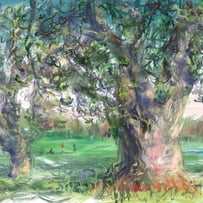








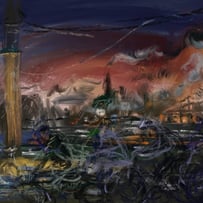
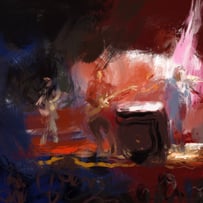
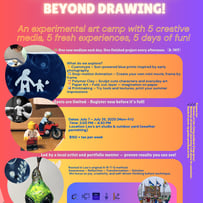
Latest work!
Catch up on the latest news? Please contact!
Portfolio
After many years of academy art, my purpose has become clear: to escape and find the original meaning of life with everything.
My daily routine & my life & what I love.


NFT Artwork for All Mankind
New art experiments in various mixed materials and across categories, is it still art without experimentation?
Join our digital painting workshops and unleash your creativity. Learn the techniques and skills needed to create stunning digital artworks.


My Image Salon
Is food and water and air for all our eyes.


Digital Painting Workshops
Portfolio






































































































vliuxin@gmail.com
About
Learn more about Liuxin's ART and their passion for digital painting


Contact
Get in touch with Liu Xin

